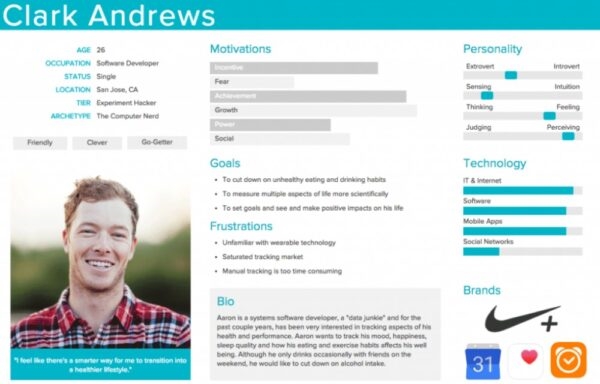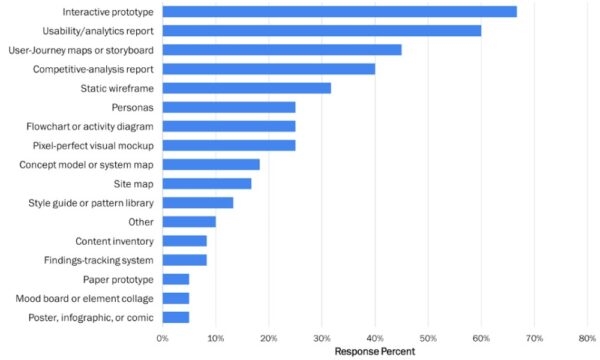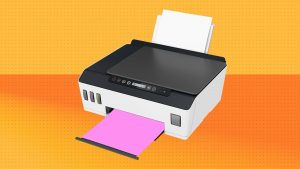When you work in user experience (UX) design, you’re focused on delivering useful, efficient products to users. There are a plethora of tasks and processes involved in doing so. Often, you handle those jobs on a kind of autopilot. They’re what you do, so you do them. That’s not much by way of an explanation to show a potential employer or client your utility, though.
If you want to get hired for a new project or by a new firm, you need to tell the story of your prior successes. The primary way of doing so is via UX case studies. They’re what you can show those who haven’t worked with you before, how talented, reliable, and skillful you are. It’s how you get that new gig or turn an internship into a full-time job.
How, though, do you go about creating a winning UX case study? That’s what we’re going to cover right here. We’ll run through the vital elements of any case study, and how you can get each of them correct. First, though, let’s drill down into precisely what UX case studies are, and the purpose they serve.
What is a UX Case Study & What’s it For?
UX case studies should form the principal content of your portfolio. That portfolio’s what you give to prospective clients or employers. They’re the best way to show off the quality and extent of your work through your career to date.
You should use case studies to explain the projects in which you’ve played a part. Did you, for instance, help to build a website that went live and proved hugely successful? Or, were you a crucial part of an exciting project to build a chatbot to boost an organization’s customer service?
The UX design sector is a growing one. From connected devices as part of the IoT boom to better ecommerce websites, firms need UX design. As the below graphic shows, the number of UX job roles is continually increasing.

Source: ITJobsWatch
Competition for available roles is fierce, however. You must differentiate yourself from those others looking to take up the same jobs. That’s where the importance of UX case studies lies. They allow you to show off your processes, abilities, and advanced communications, all in one fell swoop. That’s why it’s vital you get your UX case studies correct.
Essential Elements of Your UX Case Study
Not everyone is a talented writer. It’s a specialized skill that only a few individuals make a career out of. If you’re going to write a winning UX case study, then, it’s understandable that you may want a little help.
We’re going to offer that assistance in the form of a proven structure for your case studies. The following are essential elements of a superior case study:
- Overview or executive summary
- Problems & objectives
- Target audience
- Scope & responsibilities
- Process, challenges & responses
- Deliverables & outcomes
- Key lessons & takeaways
Structure your case studies around those sections, and you’re half-way there. Now, let’s look at each element, in turn, to explain what you need to include and how.
Overview or Executive Summary
The best UX case studies begin with a concise overview. It’s the same as how the most-respected pieces of academic research have an executive summary. You can think of your summary as the case study equivalent of a ‘TL; DR’ section at the start of a blog post. It must boil down the essence of your study in a handful of paragraphs.
There are two central points that your overview must cover. These are a general summary of the broader project, and a rundown of your individual role within it. Readers should get an idea of what they’ll learn by reading the rest of the case study from the overview. It can sometimes be helpful to leave the writing of your overview until last.
Problems & Objectives
UX design is often about problem-solving. Any project you undertake is, in essence, a means of solving particular issues. Early on in any case study, demonstrate your grasp on the problem that was at hand. Explain the pain point your client had, which caused them to turn to you or your company for UX design support.
From there, you can set out the desired outcome of the project. What did your client and yourself decide on as your shared objective? Did you, for instance, seek to:
- Improve the collaborative features of HD video conferencing?
- Boost conversion rates to get a firm more email subscribers?
- Enhance a company’s web apps to aid customer satisfaction?
When you outline the goals of any project, get as specific as you can. If you agreed on particular objectives, explain them in full. For example, were you aiming to improve net promoter scores (NPS) by 10% as a measure of higher customer satisfaction? The only thing to be careful of in this regard, though, is not to disclose more than a client may wish you to. Never break the terms of an NDA, for instance, in seeking to make your case study more detailed.
Target Audience
Whatever product you were working on, you’ll have taken the time to get to know its target audience. Your case studies should relate your understanding of the end-users to readers. Make sure those readers understand at whom the product was aimed. Tell them what you knew about them and how you sought to satisfy them. You might even include a theoretical customer persona to display this information. You’ll find an example of such below:

Source: Adobe
Chances are, you learned more about the product’s audience as your project progressed. You may, for instance, have thought that the users of a landing page builder would-be marketers. As the project went on, perhaps you found they were more often small business owners.
It’s up to you how to address this in your case study. You could explain what you learned in this section. Otherwise, you can talk later on about the new insight you gained and how it altered your process.
Scope & Responsibilities
This is the final section of your case studies that sets up your project. After it, you’re into the nitty-gritty of what you did, and how. It’s in this section that you must explain the scope of the overall project. As well as your responsibilities within it.
It’s essential to define the boundaries of the work your case study discusses. By doing so, it helps readers understand how and why the decisions you took made sense. It gives them a frame of reference to judge your decision-making, design choices, and more.
Process, Challenges & Responses
The real meat of your UX case study is where you explain what you did. You need to tell readers the story of the project and how you contributed. Take them step-by-step through the decisions you took and the paths the work went down. Make sure to exemplify along the way how your input aided overall success.
The exact process you can write about will differ from one case study to the next. In the same way as the process of any project differs. Make sure to feature, though, the essential steps you took. They may be things like customer journey mapping, prototyping, testing, and deployments.
Ensure to include in this part of your study any challenges or issues you faced. Explain how such problems arose, and – crucially – how you responded to solve them. Did you encounter cybersecurity issues? Perhaps your client moved the goalposts as to what they wanted from a new solution? Detail how you thought on your feet and reacted to any unforeseen circumstances.
Deliverables & Outcomes
You’ve covered what you did as part of a project. Now it’s time to share the results. Display to the readers of your case studies what your work achieved. If NDAs allow, feature examples of the final deliverables. They may be screenshots of a new mobile app or a website you built. You could even outline the full set of documents or assets you produced as part of the job. The following are common deliverables from UX projects.

Source: Nielsen Norman Group
What’s crucial in this section is also to refer back to the initial objectives of the project. Reiterate what you were aiming to achieve. Then, explain how you met or exceeded those goals. If you didn’t do so, then you may not want to build a case study around the particular project.
Key Lessons & Takeaways
The best way to round off your case study is by talking about the lessons you learned along the way. Doing so helps show that you’re capable of self-reflection. It also demonstrates that you make the most of your experiences to grow and improve.
Think about what happened during your project and what it taught you. Lessons can be practical and specific or broader. For instance, maybe you discovered a new method for prototyping. Alternatively, perhaps you learned how to better tailor communications with your colleagues. In short, show any prospective client or employer that you were a better worker at the end of the project than the start.
UX Case Studies – Telling the Story of Your Successes
The UX field is an ever more competitive one. If you’re going to get your dream job or land that massive client, you need to set yourself apart. UX case studies are your best means of doing so. They’re how you tell the story of your past successes, and how they came to make you an irresistible candidate.
Business & Finance Articles on Business 2 Community
(112)





